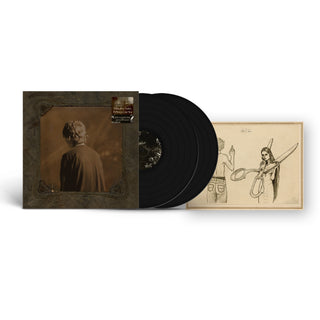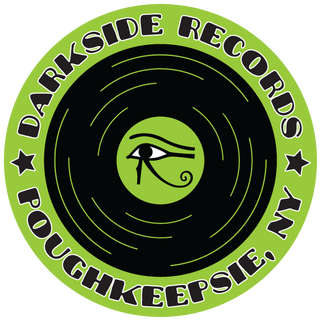Alberto La Rocca- Weiss & J.S. Bach: Suite SW47 for Guitar & Violin

This recording features a work with a strange coincidence in it's compositional process and an astonishing dual authorship. Remarkably, Silvius Leopold Weiss's Lute Suite SW47 (which he named Suonata) also comes with a violin part that can be played over the top of it, composed by none other than Johann Sebastian Bach. A recent comparison of sources revealed that the harpsichord part in Bach's Suite for Violin & Harpsichord BWV1025, long considered to be of doubtful attribution, perfectly matches Weiss's suite. The violin part, meanwhile, was indeed composed entirely by Bach and is an additional melody independent of Weiss's musical material. It feels almost like a 'free improvisation' above the suite and recalls a similar process carried out by Charles Gounod in 1859: his Ave Maria fits over the first Prelude from Bach's Well-Tempered Clavier BWV846. The sole exception is the Fantasia movement in Bach's piece, which is not derived from Weiss's suite, meaning both the violin and harpsichord parts in it are unique to Bach. This recording presents Weiss's suite on it's own and with the addition of Bach's violin part, both versions arranged by guitarist Alberto La Rocca for his instrument in place of the lute or harpsichord. (The all-Bach Fantasia is not included in the version without violin.) Weiss's Suite (Suonata) is a high-quality work composed for a 13-course Baroque lute. It is rarely, if ever, performed by either lute or guitar players, yet it contains all the best features of the great German lutenist's oeuvre: a refined and elegant compositional style and a varied range of expression. Bach's 'added melody', composed with his usual superhuman ability, shines a new light on the original suite, as if dressing it up in extraordinarily elegant attire. The violin part comments on the original lute texture without suffocating it, almost like a free improvisation above it. It plays with the various elements of Weiss's music, extrapolating ideas for themes, imitating them or simply wandering freely. Bach's part is also highly imaginative and varied in it's expression, frequently adding complex rhythmic dovetailing and significant virtuosity while always staying true to the emotions of Weiss's movements. Bach and Weiss were friends and met on several occasions. Johann Friedrich Reichardt even describes them challenging each other to an improvisation competition: 'Anyone who understands the challenge of playing harmonic modulations and decent counterpoint on the lute will be surprised and amazed to hear an eyewitness say that Weiss, the great lutenist, competed with J.S. Bach, the great harpsichordist and organist, in playing fantasies and fugues.' While the origins of his 'transcription with accompaniment' of Weiss's Suite SW47 are still a mystery, the fact remains that we can now enjoy a unique and unusual masterpiece, which these two brilliant composers had a hand in writing.
This recording features a work with a strange coincidence in it's compositional process and an astonishing dual authorship. Remarkably, Silvius Leopold Weiss's Lute Suite SW47 (which he named Suonata) also comes with a violin part that can be played over the top of it, composed by none other than Johann Sebastian Bach. A recent comparison of sources revealed that the harpsichord part in Bach's Suite for Violin & Harpsichord BWV1025, long considered to be of doubtful attribution, perfectly matches Weiss's suite. The violin part, meanwhile, was indeed composed entirely by Bach and is an additional melody independent of Weiss's musical material. It feels almost like a 'free improvisation' above the suite and recalls a similar process carried out by Charles Gounod in 1859: his Ave Maria fits over the first Prelude from Bach's Well-Tempered Clavier BWV846. The sole exception is the Fantasia movement in Bach's piece, which is not derived from Weiss's suite, meaning both the violin and harpsichord parts in it are unique to Bach. This recording presents Weiss's suite on it's own and with the addition of Bach's violin part, both versions arranged by guitarist Alberto La Rocca for his instrument in place of the lute or harpsichord. (The all-Bach Fantasia is not included in the version without violin.) Weiss's Suite (Suonata) is a high-quality work composed for a 13-course Baroque lute. It is rarely, if ever, performed by either lute or guitar players, yet it contains all the best features of the great German lutenist's oeuvre: a refined and elegant compositional style and a varied range of expression. Bach's 'added melody', composed with his usual superhuman ability, shines a new light on the original suite, as if dressing it up in extraordinarily elegant attire. The violin part comments on the original lute texture without suffocating it, almost like a free improvisation above it. It plays with the various elements of Weiss's music, extrapolating ideas for themes, imitating them or simply wandering freely. Bach's part is also highly imaginative and varied in it's expression, frequently adding complex rhythmic dovetailing and significant virtuosity while always staying true to the emotions of Weiss's movements. Bach and Weiss were friends and met on several occasions. Johann Friedrich Reichardt even describes them challenging each other to an improvisation competition: 'Anyone who understands the challenge of playing harmonic modulations and decent counterpoint on the lute will be surprised and amazed to hear an eyewitness say that Weiss, the great lutenist, competed with J.S. Bach, the great harpsichordist and organist, in playing fantasies and fugues.' While the origins of his 'transcription with accompaniment' of Weiss's Suite SW47 are still a mystery, the fact remains that we can now enjoy a unique and unusual masterpiece, which these two brilliant composers had a hand in writing.





